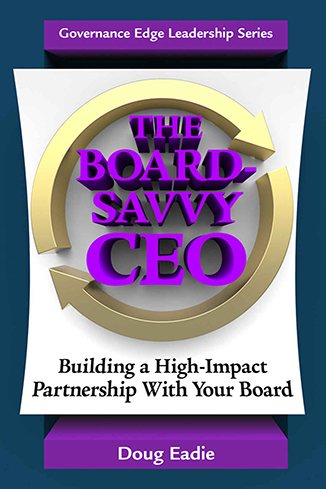I don’t know three more board-savvy nonprofit leaders than Ronnie Bryant, President & CEO of the Charlotte Regional Partnership, Jeff Finkle, President/CEO of the International Economic Development Council, and Michael Langley, Chief Executive Officer of the Minneapolis Saint Paul Regional Economic Development Partnership, so I’m delighted they recorded this podcast on building solid board chair-CEO partnerships. Not only have Ronnie and Mike – wearing their CEO hats – built close and productive partnerships with the chairs of their boards, they’ve also worked closely with Jeff as chairs of the IEDC Board.
Ronnie, Mike and Jeff well know that investing in the development of a rock-solid board chair-CEO working relationship can yield powerful organizational dividends. They would agree with me that one of the preeminent priorities of a truly board-savvy CEO is to transform his or her board chair into a strong governing partner, a reliable ally, and when needed, an ardent change champion. The board chair makes an especially important partner for the CEO not only because of her formal authority as “CEO” of the governing board, but also the fact that board chairs are often major actors who wield tremendous influence in their communities, including in the profession or industry an association represents.
As you’ll learn from their podcast, four major strategies have served these CEOs well in building solid partnerships with their board chairs:
- They get to know their board chair really well early in their relationship: in terms of leadership style, professional goals, passionate interests, skills (such as public speaking), etc.
- They sit down with their board chair early in his or her tenure to discuss their respective roles and how they will work together and support each other.
- They actively help their board chair succeed in leading the board, for example, by making sure the chair is thoroughly briefed before board meetings.
- And they cement the relationship by making sure their board chair is handsomely compensated for contributing time and energy – not in dollars, of course, but in terms of such currency as public recognition, assistance in achieving professional goals, the opportunity to deal with issues close to his or her heart, and the like.






